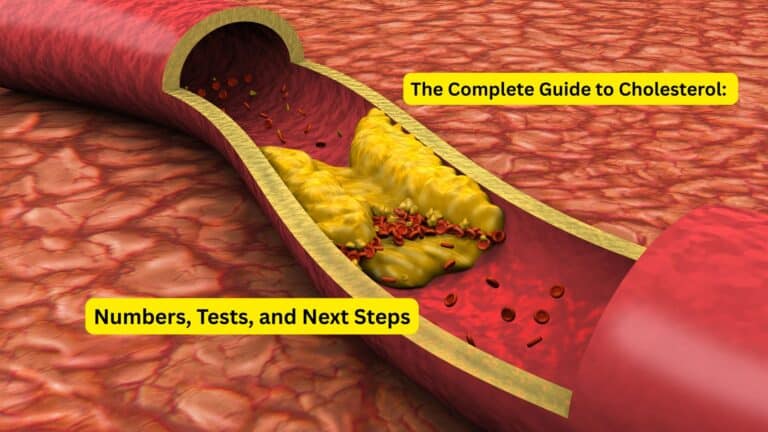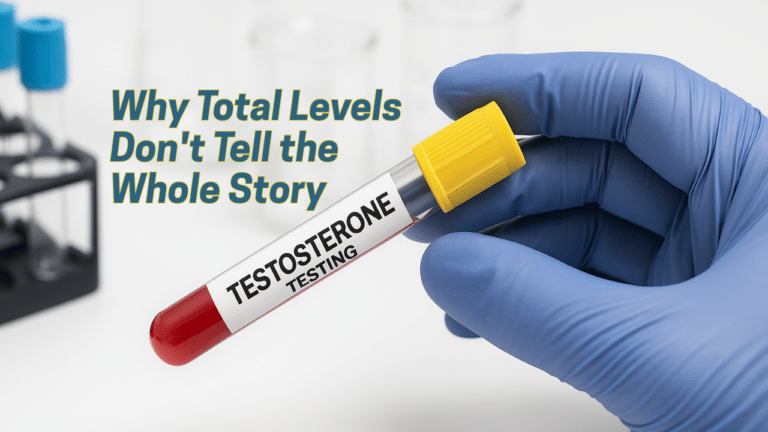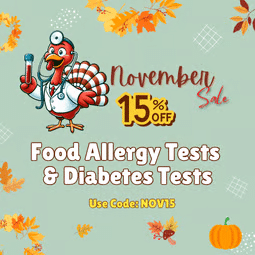For millions of people living with food allergies, the greatest threat often comes not from intentionally consuming allergens, but from invisible contamination that occurs when allergenic substances transfer from one food to another. Cross-contamination represents one of the most serious yet underestimated risks in food allergy management, capable of triggering severe reactions from even microscopic amounts of allergens. This hidden danger lurks in manufacturing facilities, restaurant kitchens, and even home environments, making awareness and prevention strategies essential for anyone affected by food allergies.
Understanding how cross-contamination occurs, where it’s most likely to happen, and what steps can be taken to prevent it empowers individuals and families to make safer food choices. From shared equipment in food processing plants to contaminated cooking surfaces in restaurants, these unintentional exposures have led to countless allergic reactions and continue to pose significant challenges for both consumers and the food industry.
Introduction
Cross-contamination in the context of food allergies occurs when traces of allergenic foods unintentionally transfer to other foods or surfaces, creating unexpected exposure risks for sensitive individuals. Unlike direct consumption of known allergens, cross-contamination represents a hidden threat that can catch even the most vigilant allergy sufferers off guard. The significance of this issue becomes clear when considering that even microscopic amounts of certain allergens can trigger life-threatening anaphylactic reactions in susceptible individuals.
The complexity of modern food production, distribution, and preparation creates numerous opportunities for cross-contamination to occur. From shared manufacturing equipment that processes multiple products to restaurant kitchens where numerous dishes are prepared simultaneously, the potential for allergen transfer exists at every stage of the food supply chain. This reality has prompted regulatory agencies, food manufacturers, and healthcare providers to develop comprehensive strategies for identifying, preventing, and managing cross-contamination risks.
How Cross-Contamination Happens
Cross-contamination can occur through multiple pathways, each presenting unique challenges for prevention and detection. Understanding these mechanisms helps consumers and food service providers identify potential risks and implement appropriate safeguards to minimize accidental allergen exposure.
Food Processing and Manufacturing
The most widespread source of cross-contamination occurs during food processing and packaging operations where shared equipment processes multiple products containing different allergens. Manufacturing facilities often use the same production lines, mixers, conveyor belts, and packaging equipment for various products throughout the day, creating opportunities for residual allergens to transfer from one product to another. Even thorough cleaning procedures between production runs may not eliminate all traces of allergenic proteins, particularly those that adhere strongly to equipment surfaces.
Restaurant and Food Service Environments
Restaurant kitchens present particularly complex cross-contamination scenarios due to the fast-paced nature of food preparation and the simultaneous handling of numerous ingredients. Approximately 25% of anaphylactic reactions related to food allergies occur in restaurant settings, often despite staff awareness of customer allergies. Shared cooking surfaces, fryers, grills, and utensils can transfer allergens between dishes, while airborne particles from ingredients like flour or seafood can settle on nearby foods.
Home Kitchen Cross-Contact
Even in controlled home environments, cross-contamination poses risks for families managing food allergies. Shared cutting boards, knives, toasters, and cooking utensils can harbor allergenic residues that transfer to supposedly safe foods. Cooking oils used for multiple purposes, contaminated storage containers, and inadequate cleaning of surfaces between food preparations contribute to unintentional allergen exposure in domestic settings.
Regulations and Food Safety
The regulatory landscape surrounding food allergen management has evolved significantly in recent years, with federal agencies implementing comprehensive frameworks to address cross-contamination risks. These regulations establish standards for manufacturing practices, labeling requirements, and safety protocols designed to protect consumers with food allergies.
Federal Guidelines and Standards
The Food and Drug Administration’s Food Allergen Labeling and Consumer Protection Act (FALCPA) and the more recent FASTER Act provide comprehensive guidance for managing allergen risks, including cross-contact prevention in food manufacturing. These regulations require food manufacturers to identify major allergens in their products and implement controls to prevent cross-contamination during production processes. The FDA also mandates clear labeling of potential cross-contamination risks through advisory statements like “may contain” warnings.
Industry Inspections and Compliance
Federal inspectors regularly evaluate food manufacturing facilities to ensure compliance with allergen control standards and verify that companies have implemented effective cross-contamination prevention measures. These inspections assess everything from equipment cleaning procedures to staff training programs, helping identify potential weaknesses in allergen management systems before they result in contaminated products reaching consumers.
Food Recall Statistics
The significance of cross-contamination in food safety becomes evident through recall data, which shows that approximately 33% of food recalls involve undeclared allergens due to cross-contamination. These recalls often occur when routine testing reveals the presence of allergens in products that should not contain them, highlighting the ongoing challenges manufacturers face in preventing cross-contact during production processes.
Cross-Contamination in Restaurants
Restaurant dining presents unique challenges for individuals with food allergies, as the fast-paced, multi-tasking nature of commercial kitchens creates numerous opportunities for cross-contamination. Understanding these risks and developing effective communication strategies with restaurant staff becomes crucial for safe dining experiences.
Common Restaurant Risk Factors
Restaurant cross-contamination typically occurs through shared cooking equipment, preparation surfaces, and storage areas. Deep fryers used for multiple items, grills that cook various proteins simultaneously, and prep stations where different ingredients are handled can all serve as transfer points for allergens. Even seemingly minor details like using the same serving spoons for different dishes or storing allergen-containing ingredients near allergen-free items can create exposure risks.
Staff Training and Communication Challenges
Despite increasing awareness of food allergies, restaurant staff training on cross-contamination prevention remains inconsistent across the industry. Servers may not fully understand the difference between food preferences and life-threatening allergies, while kitchen staff might lack detailed knowledge about ingredient sources and preparation protocols. This knowledge gap contributes to the concerning statistic that dining-related allergic reactions continue to occur despite customers clearly communicating their dietary restrictions.
Consumer Protection Strategies
Diners with food allergies can take several steps to minimize restaurant cross-contamination risks, including researching restaurants in advance, calling ahead to discuss specific needs, and clearly communicating the severity of their allergies to both servers and kitchen staff. Choosing restaurants with dedicated allergen-free preparation areas, asking detailed questions about cooking methods, and being prepared to leave if staff seem uncertain about allergen protocols all contribute to safer dining experiences.
Detection and Prevention Strategies
Advances in detection technology and prevention protocols have significantly improved the ability to identify and prevent cross-contamination in various settings. These innovations benefit both food manufacturers seeking to ensure product safety and consumers trying to avoid accidental allergen exposure.
Advanced Detection Technologies
Modern allergen detection methods include ELISA tests and lateral flow assays that can identify trace amounts of allergenic proteins on surfaces, in cleaning solutions, and in finished products. These sensitive testing methods allow manufacturers to verify the effectiveness of their cleaning procedures and detect potential cross-contamination before products reach consumers. Rapid testing capabilities also enable real-time monitoring during production processes.
Consumer Prevention Measures
Individuals and families managing food allergies can implement several strategies to reduce cross-contamination risks in their daily lives. Careful reading of ingredient labels and advisory statements, maintaining dedicated cooking utensils and preparation areas for allergen-free foods, and establishing clear protocols for food storage and preparation help minimize accidental exposure at home. When dining out, asking specific questions about preparation methods and ingredient sourcing provides additional protection.
Industry Innovation and Improvements
Food manufacturers continue to develop improved allergen control plans and enhanced labeling practices to address cross-contamination concerns. These improvements include dedicated production lines for allergen-free products, enhanced cleaning protocols between production runs, and more precise labeling that helps consumers make informed decisions about potential risks.
Statistics Snapshot
Current data on cross-contamination reveals the scope and impact of this hidden danger on food allergy management. The statistics demonstrate that despite regulatory efforts and increased awareness, cross-contamination remains a significant concern requiring ongoing vigilance from all stakeholders in the food system.
Food recall data provides clear evidence of cross-contamination’s prevalence in food manufacturing, with undeclared allergens representing a substantial portion of safety-related recalls each year. Restaurant-related allergic reactions continue to occur at concerning rates, highlighting the challenges of managing allergen risks in commercial food service environments.
Consumer surveys reveal that 34% of people with food allergies report experiencing reactions while dining out, underscoring the real-world impact of cross-contamination on individuals and families managing these conditions. These statistics emphasize the importance of continued education, improved prevention strategies, and accessible testing services for identifying and managing food allergies.
Practical Implications
The reality of cross-contamination risks creates several practical considerations for individuals with food allergies, their families, healthcare providers, and the broader food industry. Effective management requires a multi-faceted approach that addresses prevention, detection, emergency preparedness, and ongoing monitoring.
Consumer Safety Measures
Individuals with food allergies must maintain constant vigilance regarding potential cross-contamination risks, always carrying emergency medications like epinephrine auto-injectors and knowing how to use them effectively. Developing relationships with trusted restaurants and food suppliers, maintaining detailed records of safe products and brands, and staying informed about food recalls helps create a safer environment for daily living.
Family and Household Management
Families managing food allergies benefit from establishing clear protocols for food storage, preparation, and cleanup that minimize cross-contamination risks at home. This includes using separate cutting boards and utensils for allergen-containing and allergen-free foods, implementing thorough cleaning procedures, and educating all household members about the importance of these safety measures.
Healthcare Provider Recommendations
Healthcare providers play a crucial role in helping patients understand cross-contamination risks and develop personalized management strategies. Regular allergy testing through services like Walk-In Lab helps identify specific triggers and monitor changes in sensitivity levels over time, providing valuable information for developing effective avoidance strategies and emergency action plans.
Industry and Advocacy Support
Supporting initiatives that improve allergen training for food service workers, advocate for clearer labeling standards, and promote research into better detection and prevention technologies contributes to safer environments for everyone affected by food allergies. Consumer feedback and participation in allergy advocacy organizations help drive continued improvements in food safety practices.
FAQ Section
What is cross-contamination in food allergies?
Cross-contamination occurs when allergenic substances inadvertently transfer from one food or surface to another, creating unexpected exposure risks for individuals with food allergies. This can happen through shared equipment, cooking surfaces, utensils, or even airborne particles, potentially triggering allergic reactions even when the contaminated food doesn’t intentionally contain the allergen.
How common is cross-contamination in food manufacturing?
Cross-contamination represents a significant challenge in food manufacturing, with approximately one-third of food recalls involving undeclared allergens due to cross-contact during production processes. This statistic highlights the ongoing difficulties manufacturers face in preventing allergen transfer despite regulatory requirements and industry best practices.
Can cross-contamination happen in restaurants?
Yes, restaurants present particularly high-risk environments for cross-contamination due to shared cooking equipment, preparation surfaces, and fast-paced kitchen operations. Studies show that about 25% of anaphylactic reactions occur in restaurant settings, often despite staff awareness of customer allergies, emphasizing the importance of clear communication and careful restaurant selection for individuals with food allergies.
How can consumers protect themselves from cross-contamination?
Consumers can minimize cross-contamination risks by carefully reading all food labels including advisory statements, communicating clearly about allergies when dining out, maintaining separate cooking and storage areas for allergen-free foods at home, and staying informed about food recalls. Always carrying emergency medications and having action plans for accidental exposure also provide important safety nets.
Are there tests to detect allergens and prevent cross-contact?
Yes, advanced testing methods including ELISA and rapid lateral flow assays can detect trace amounts of allergenic proteins on surfaces and in foods, helping manufacturers verify cleaning effectiveness and prevent contaminated products from reaching consumers. For individuals, regular allergy testing helps identify specific sensitivities and guides personalized prevention strategies.
Conclusion
Cross-contamination represents one of the most persistent and challenging aspects of food allergy management, affecting individuals across all age groups and settings. From manufacturing facilities where shared equipment processes multiple products to restaurant kitchens where numerous dishes are prepared simultaneously, the opportunities for unintentional allergen transfer remain numerous and often unpredictable. The statistics are sobering: approximately one-third of food recalls involve undeclared allergens, and a quarter of anaphylactic reactions occur in restaurant settings, highlighting the real-world impact of this hidden danger.
However, awareness and proactive management strategies can significantly reduce these risks. Advances in detection technology, improved regulatory frameworks, and enhanced industry practices continue to strengthen the safety net for individuals with food allergies. Consumer education about reading labels, communicating effectively with food service providers, and maintaining vigilant household practices creates additional layers of protection.
The key to managing cross-contamination risks lies in understanding that food allergies require ongoing attention and regular reassessment. As sensitivities can change over time and new products enter the market, periodic allergy testing becomes an essential component of comprehensive allergy management. Walk-In Lab’s accessible and affordable allergy testing panels provide individuals and families with the information needed to identify specific triggers, monitor sensitivity changes, and develop personalized strategies for avoiding accidental exposure.
Living safely with food allergies in an environment where cross-contamination poses constant risks requires vigilance, preparation, and professional support, but it is entirely achievable with the right knowledge and resources.
This content is for informational purposes only and is not a substitute for professional medical advice, diagnosis, or treatment. Always seek the advice of your physician or other qualified health provider with any questions you may have regarding a medical condition.






